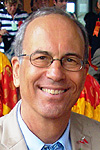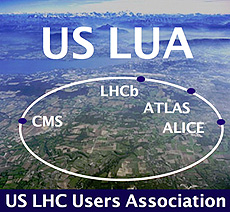Fermilab hosts 2015 US LUA meeting this week
 |
|
Boaz Klima
|
Boaz Klima, LHC Physics Center co-coordinator, wrote this column.
This week Fermilab will host the annual meeting of the US LHC Users Association, or US LUA, from Nov. 11-13.
The meeting will highlight the great progress forged by the LHC team and the wide range of results from the first year of Run 2 as the search for physics beyond the Standard Model continues, as well as a wide range of Run 1 results in high-transverse-momentum, heavy-flavor and heavy-ion physics.
Following the LHC's expanded reach at 13 TeV as well as the recent progress shown in Run 1 analyses that are being finalized or maturing, we can anticipate new knowledge and perhaps some surprises.
With the LHC Physics Center here at Fermilab, we often host our CMS colleagues, and even ATLAS colleagues. But this is a unique chance to bring together many members of all four LHC experiments and hear what they are doing.
This year 28 student and young postdoc "lightning round" talks will cover both experimental and theoretical results, as well as detector developments. Overview talks from the LHC experiments, the LHC accelerator team, and the LHC Accelerator Research Program will complement a review of this year's visit to Washington, D.C., attended by the US LUA, the Fermilab Users Executive Committee and the SLAC Users Organization. We will also hear views directly from Washington: Simona Rolli of the DOE Office of High Energy Physics and Timothy Hallman, head of the DOE Office of Nuclear Physics, will give talks. Ruediger Voss, head of US-CERN International Relations, will report on the new framework that includes U.S. participation in the LHC program and CERN participation in the U.S. neutrino program for many years ahead.
Another highlight of this year's meeting is a special careers session, where the younger members of high-energy physics can share the experiences and advice of others in our field who have gone on to work outside HEP.
US LUA Chair Harvey Newman of Caltech captures the excitement of showcasing all that our community has accomplished so far during the LHC's second run:
We are looking forward to an exciting meeting, early in a new phase of exploration and discovery at the LHC. We have just completed the first year of proton-proton running at 13 TeV, the 2015 heavy ion run is now under way, and the stream of illuminating results Run 1 continues in our search for beyond-the-Standard-Model physics. It will be great to see the expanding physics landscape through the eyes and through the outstanding work of so many of the younger members of our field at the meeting. And this is just the start, with the rest of Run 2 and the long-range prospect of years discovery before us, as we move towards the future High Luminosity LHC with greatly improved upgraded experiments.
We look forward to three days of lively discussion on the results from all corners of the Large Hadron Collider.
Registration is still open.
 |
The US LHC Users Association Annual Meeting this week will feature new results from the LHC's first and second run. |
|